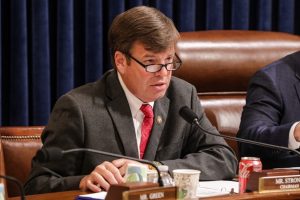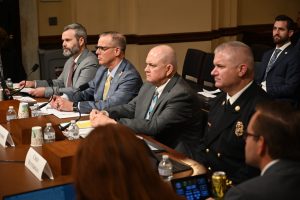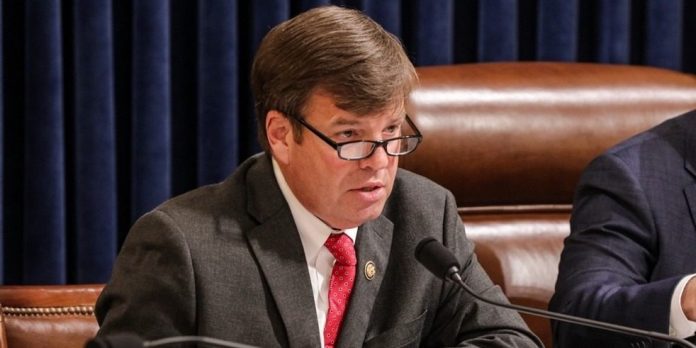WASHINGTON — The Rocket City’s involvement in expanding the use of drones from disaster response to helping protect the nation’s borders was the subject of a hearing in Congress this week led by U.S. Rep. Dale Strong.
Strong, chairman of the Subcommittee on Emergency Management and Technology, invited unmanned aircraft systems (UAS) subject matter experts and industry leaders from Huntsville to testify at a Committee on Homeland Security hearing on the use of UAS in support of the Department of Homeland Security’s (DHS) mission.
“Huntsville, Alabama, is renowned for its leadership in cutting-edge research and development,” said Strong (R-Monrovia). “As home to Redstone Arsenal, the nation’s second-largest research park, and several universities, Huntsville is a thriving hub for American innovation. I am pleased that Alabama’s Fifth District is well represented on the witness panel.”

The joint hearing was led by Strong and Rep. Michael Guest (R-Miss.), chairman of the Subcommittee on Border Security and Enforcement.
Entitled “Exploring the Use of Unmanned Aircraft Systems Across the DHS Enterprise,” the hearing examined the Department of Homeland Security’s use of UAS for purposes such as disaster mitigation, emergency management, border protection, and drug interdiction.
“Emerging technologies like UAS are reshaping the way we respond to disasters,” Strong said. “Drones enable the protection of emergency management personnel in high-risk situations, while at the same time increase the effectiveness of the work they do.
“DHS also utilizes UAS to safeguard our borders. They leverage this technology to protect our homeland from illegal crossings and combat illicit activities such as human and drug smuggling. Customs and Border Protection face tremendous challenges, from dangerous environments and a broadening mission set to adversaries that continue to evolve their tactics and capabilities.”

Two witnesses from Huntsville — Dr. Michael Ledbetter, executive vice president and Chief Operating Officer of COLSA; and Jerry Hendrix, executive director of Rotorcraft Systems Engineering and Simulation Center at the University of Alabama in Huntsville — shared the work they are doing in this space.
“COLSA has designed and developed highly reliable and resilient UAS, and manufactured thousands of units currently deployed worldwide,” said Ledbetter. “We also developed software to coordinate UAS swarming. COLSA is now a leading provider of low-cost, non-developmental, deployable Group 1 and Group 2 Swarm UAS.
“As the prime contractor, the primary objective of drone program is to provide realistic responses to emerging battlespace threats from UAS by rapidly designing, manufacturing, producing, and delivering representative threat capabilities.”
The hearing also examined the department’s efforts to develop these systems by collaborating with academia and industry to integrate emerging technologies into the DHS mission.
“UAH is part of a tier 1 research university that ranks 6th in federal investment in aeronautical and aerospace engineering research,” said Hendrix. “The center specializes in autonomous research focusing on uncrewed systems and counter-uncrewed systems. Our unmanned aircraft system (UAS) disaster research has been recognized nationally by the Commercial Drone Alliance in testimony to the House Space, Science, and Technology Committee in 2023.
“UAH’s research was specified as one of the top 8 UAS programs to ‘Bring benefit to the American People.’”
Don’t miss out! Subscribe to our email newsletter to have all our smart stories delivered to your inbox.



